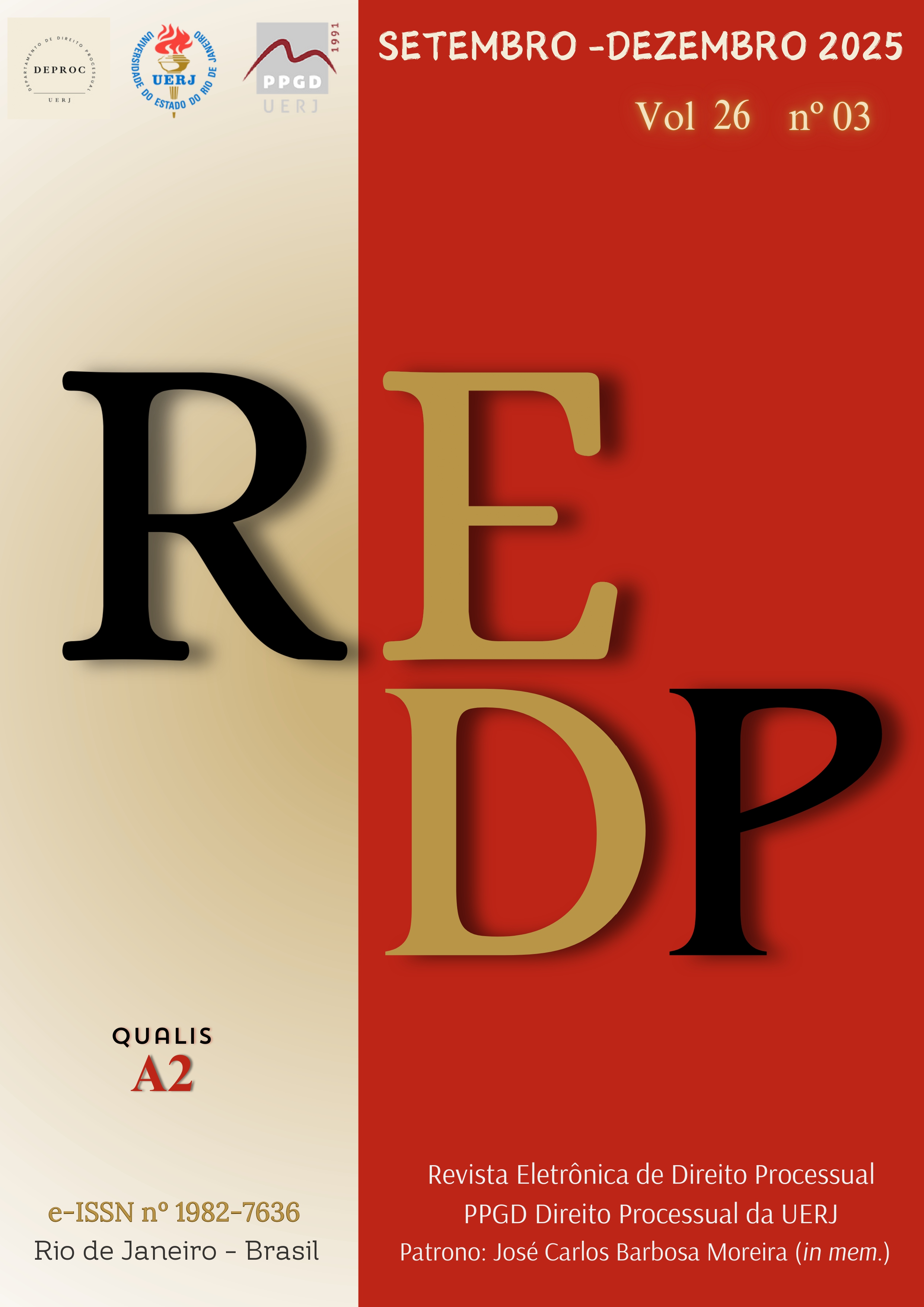THE ROLE OF THE BGH AND THE STJ AS COURTS FORMING JUDICIAL PRECEDENTS AND THE UNITY OF LAW IN GERMANY AND BRAZIL
DOI:
https://doi.org/10.12957/redp.2025.88072Resumo
The purpose of the present study is the comparative analysis of the role of the German and Brazilian superior courts – specifically, BGH and STJ – from the perspective of promoting the uniformity of jurisprudence. Although there is no model of binding to judicial precedents as a judgment technique in Germany as there is in Brazil, in CPC/15, the commitment to the uniformity of jurisprudence permeates the German legal system, including in civil procedure. In this sense, see, for example, the procedural provision of the Revision appeal, which has as admissibility requirements the need for uniformity of understanding on a given matter (Sicherung einer einheitlichen Rechtsprechung) and the preservation of legal certainty (Rechtssicherheit). They both grant the decisions of the BGH (Bundesgerichtshof) authority and compliance with the system in general, with the court exercising an important prospective/forward-looking function.
In order to seek an effective contribution to a better and more qualified jurisprudence by the Brazilian Superior Court of Justice, we will highlight the influences of the German civil process for the formation and development of the Brazilian civil procedure. Then, we will move on to the analysis of the common approaches and challenges between the two systems, through the approach of the dogma and doctrine of both countries. To this end, the study of the evolution of the main legislative reforms to the current panorama will be of fundamental value.
In the end, we will confront the roles and procedures adopted by the BGH and the STJ as precedent cuts committed to the promotion of development and unity of the law. The aim will be to contribute to the better functioning of the Brazilian Superior Court, based on the German paradigm.
Downloads
Publicado
Como Citar
Edição
Seção
Licença
Copyright (c) 2025 Gisele Mazzoni Welsch

Este trabalho está licenciado sob uma licença Creative Commons Attribution 4.0 International License.
Todos os artigos publicados na Revista Eletrônica de Direito Processual (REDP) (Departamento de Direito Processual, Universidade do Estado do Rio de Janeiro, Brasil) são licenciados por meio de uma Licença Creative Commons - Atribuição 4.0 Internacional (CC BY 4.0).
Os autores retêm os direitos autorais de seu artigo e concordam em licenciar seu trabalho com a licença CC BY 4.0, aceitando assim os termos e condições específicos desta licença disponíveis no seguinte website: https://creativecommons.org/licenses/by/4.0/legalcode.
- Os autores concedem à REDP o direito de primeira publicação, de se identificar como publicadora original do trabalho e concedem à revista uma licença de direitos não exclusivos para utilizar o trabalho das seguintes formas: Reproduzir, vender e distribuir cópias eletrônicas ou impressas do manuscrito como um todo, de partes específicas do manuscrito e de suas traduções para qualquer idioma;
- O uso do artigo por terceiros é livre, contanto que a integridade da publicação seja mantida e seus autores originais, periódico de primeira publicação e detalhes de citação sejam identificados.
Dentro dos termos da licença, os autores podem entrar em acordos contratuais adicionais separados para a distribuição não exclusiva da versão publicada do trabalho na revista.
Copyright and Licensing
All articles published in the Procedural Law Electronic Review (REDP) (Department of Procedural Law, State University of Rio de Janeiro, Brazil) are licensed under a Creative Commons License - Attribution 4.0 International (CC BY 4.0).
- Authors retain copyright to their article and agree to license their work under the CC BY 4.0 license, thereby accepting the specific terms and conditions of this license available at the following website: https://creativecommons.org/licenses/by/4.0/ legal code.
- Authors grant REDP the right of first publication, to identify itself as the original publisher of the work, and grant the journal a non-exclusive license to use the work in the following ways: Reproduce, sell and distribute electronic or printed copies of the manuscript as a whole, of specific parts of the manuscript and its translations into any language;
- Use of the article by third parties is free, as long as the integrity of the publication is maintained and its original authors, first publication journal, and citation details are identified.
Within the terms of the license, authors may enter into separate additional contractual agreements for the non-exclusive distribution of the published version of the work in the journal.




